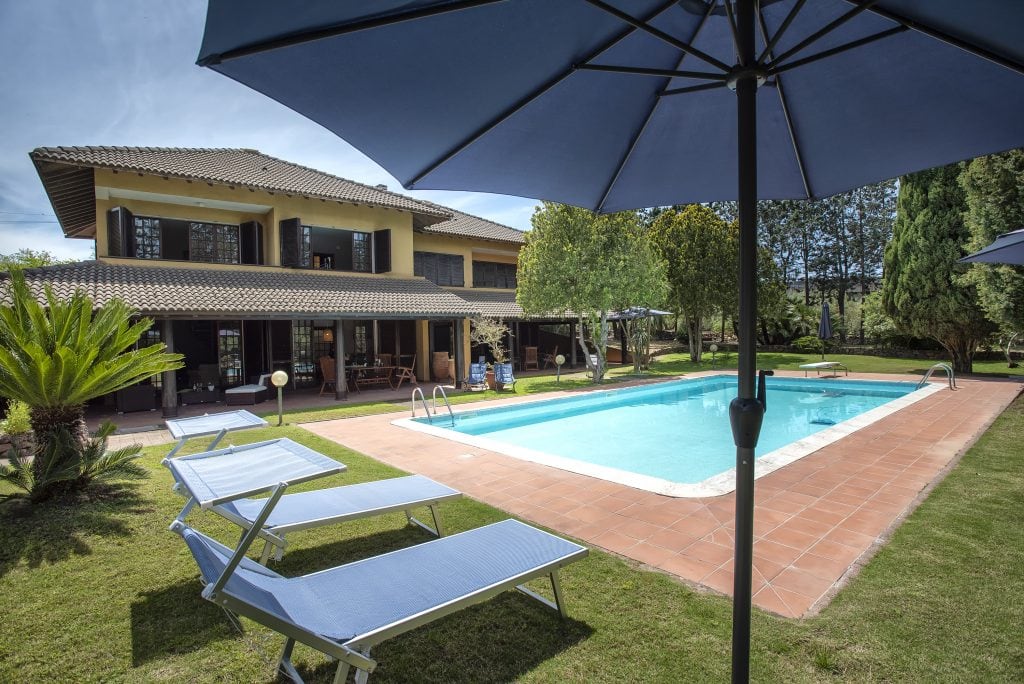Sassari’s Valley of the Nuraghi : ancient buildings and tombs of giants
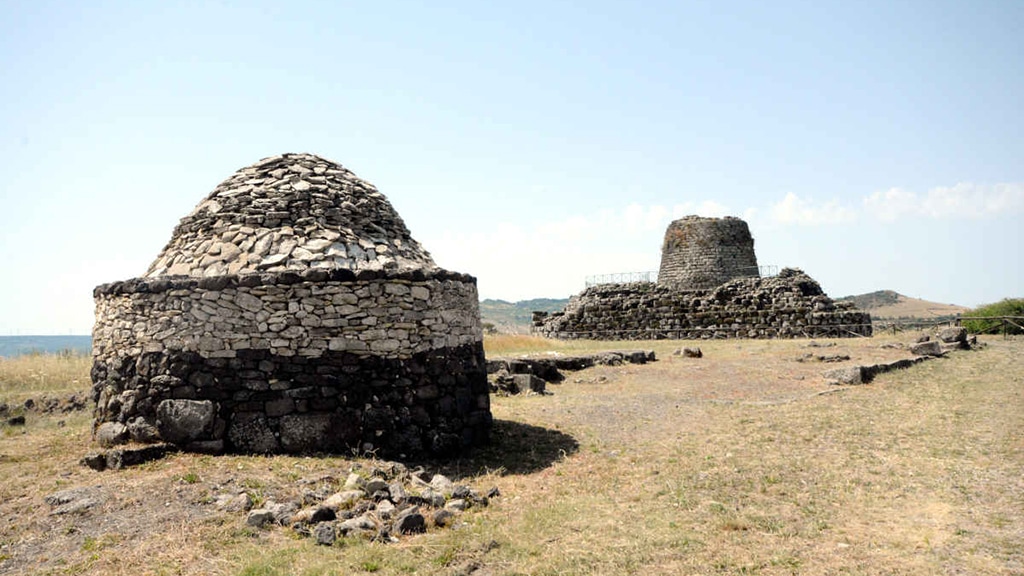
Have you heard of the Valley of the Nuraghi in Sassari? It is so called because it houses the remains of no less than 30 nuraghi and 10 tombs of the giants.
Yes, that’s right, giants.
It is located precisely in a region of north-western Sardinia called Logudoru Meilogu, but what can you expect from the remains of nuraghi and, more importantly, what exactly are the tombs of the giants? Can they be visited?
We tell you everything in this article.
The Nuraghi to see in Sassari and the history of the Valley
The history of this magical place begins as far back as the Neolithic period, some 8,000 years ago, although today the remains of that ancient civilisation are rather meagre.
What stands out, on the other hand, are the numerous vestiges of the Nuragic civilisation that still stand today in the boundless north-western region of the island.
Dolmens, village remains, tombs and megalithic constructions tell incredible stories in the eyes of scholars, tourists and locals alike.
Let’s read some of them ourselves.
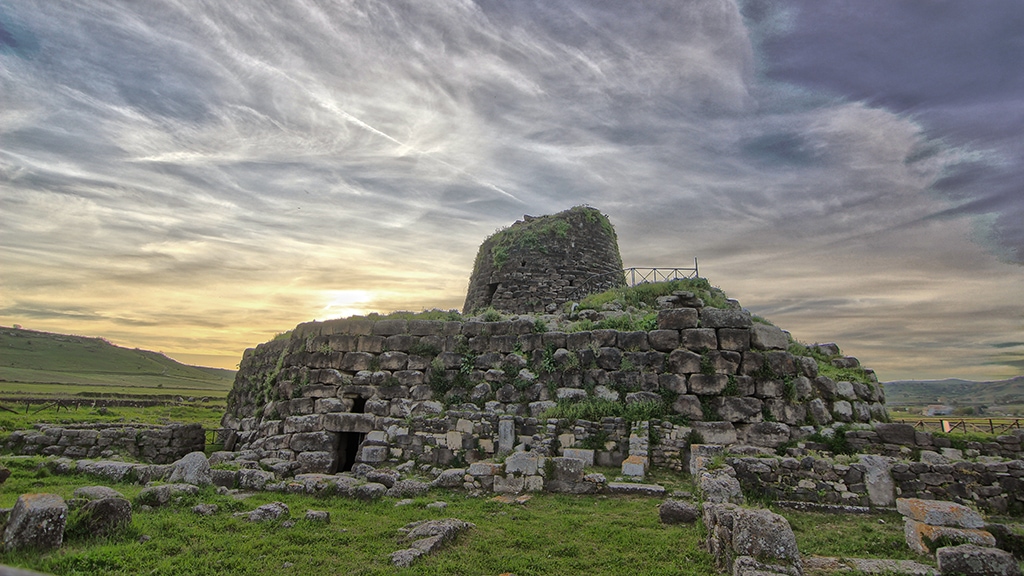
We start at Santu Antine, which is among the most important nuraghi on the entire island.
It is also known as the King’s House, “Sa domu de su Re” to say it in Sardinian.
From the dimensions of the central donjon, which measured between 22 and 24 metres, the building can be compared to a “nuragic palace”.
Just like a fortress-castle, it has a central three-storey tower surrounded by an enormous triangular bastion with three more towers.
If you walk through its corridors, you feel as if you are going back in time to see architects and craftsmen at work, displaying all their skill in constructing such grandiose architecture.
There’s more
But the extraordinary thing is that, over time, the place has continued to be inhabited. Peoples and civilisations have alternated on the site over the following millennia, which is why around the nuraghe there are also remains of an ancient village dating back to Roman times.
To find out more and complete your plunge into the past, if you visit Santu Antine in Torralba don’t forget to pass by the Museum of the Valley of the Nuraghi of Logudoro-Meilogu, located within the archaeological area.
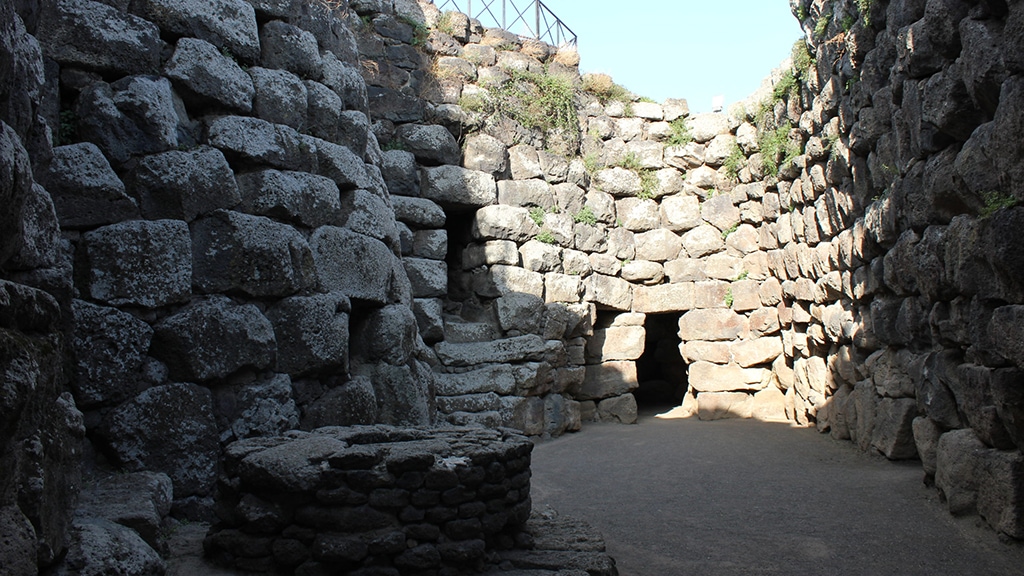
Just 2 km from Torralba is also the Nuraghe Oes, in the municipality of Giave.
It is truly fascinating because it is located in the “Land of extinct volcanoes”, which is considered a Protected Natural Monument.
It covers an area of over 20,000 square metres occupied by five craters. The landscape creates a stunning scenery that has no equal in the world and is a destination for hikers all year round.
But in the valley of the nuraghi of Sassari there are also the tombs of the giants to be seen.
The Sardinians call them “tumbas de sos mannos” and you are probably wondering what giants have to do with the island.
We’re going to tell you right now.
The Tombs of the Giants
To look at them, they are imposing monuments that were reused as collective burials during the Bronze Age.
Precisely because of their size, the Sardinians called them “tumbas de sos mannos”, and today even archaeologists prefer to call them that, tombs of the giants.
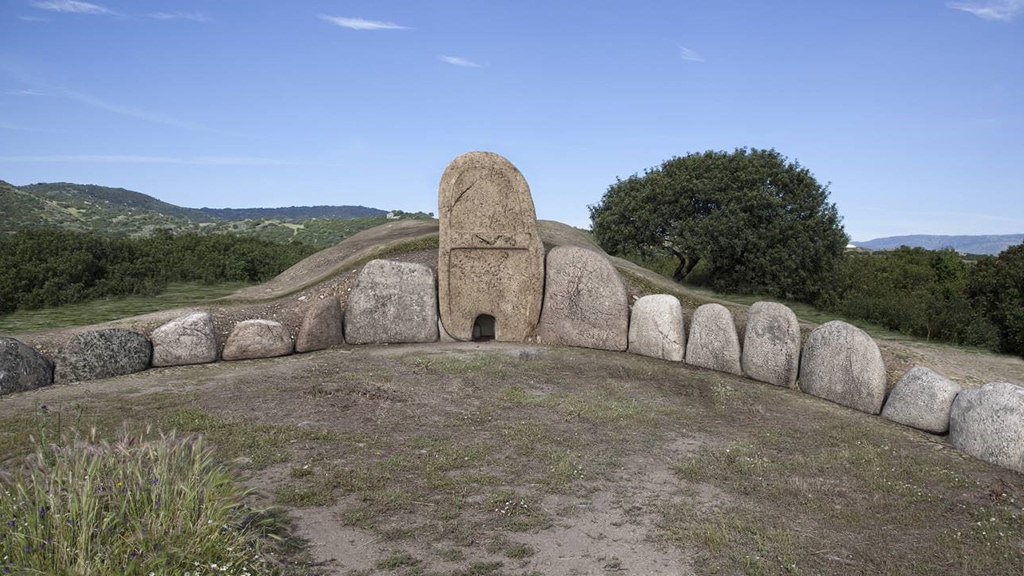
With such a structure, the members of the tribe went to the graves to pay their respects to the deceased of the community without distinction of rank. There were no special privileges for the dead buried in common, and none of them received particularly valuable offerings.
But there is one more interesting thing to know about these graves.
Apparently, the shape of the constructions recalls that of a bull’s head or the representation of a parturient, and there is a particular reason for this.
This is because the cults associated with the tombs of the giants are linked to the god Bull and the Mother Goddess.
It can be said that not much is left of these immense tombs, but in some cases one can clearly see in the ground the plan of the ancient construction, or one can glimpse a few stelae such as those of Sa Pedra Longa, or that of Sa Pedra Covaccada with the dolmen Su Crastu Covaccadu.
But where should one go to visit this immense valley and discover all its secrets?
Where is the Valley of the Nuraghi and how to visit it
The Nuraghi and tombs of the Valley can be visited along with museums that house artefacts found on site.
The Valley of the Nuraghi is a vast territory in north-western Sardinia that gravitates around the province of Sassari, including Torralba, Giave, Bonorva, Mores, Bonnanaro, Thiesi, Borutta, Cheremule and Ittireddu.
We suggest you book your stay in Sassari in a strategic point to move from one nuraghe to another and also see all the most important destinations in north-western Sardinia.
